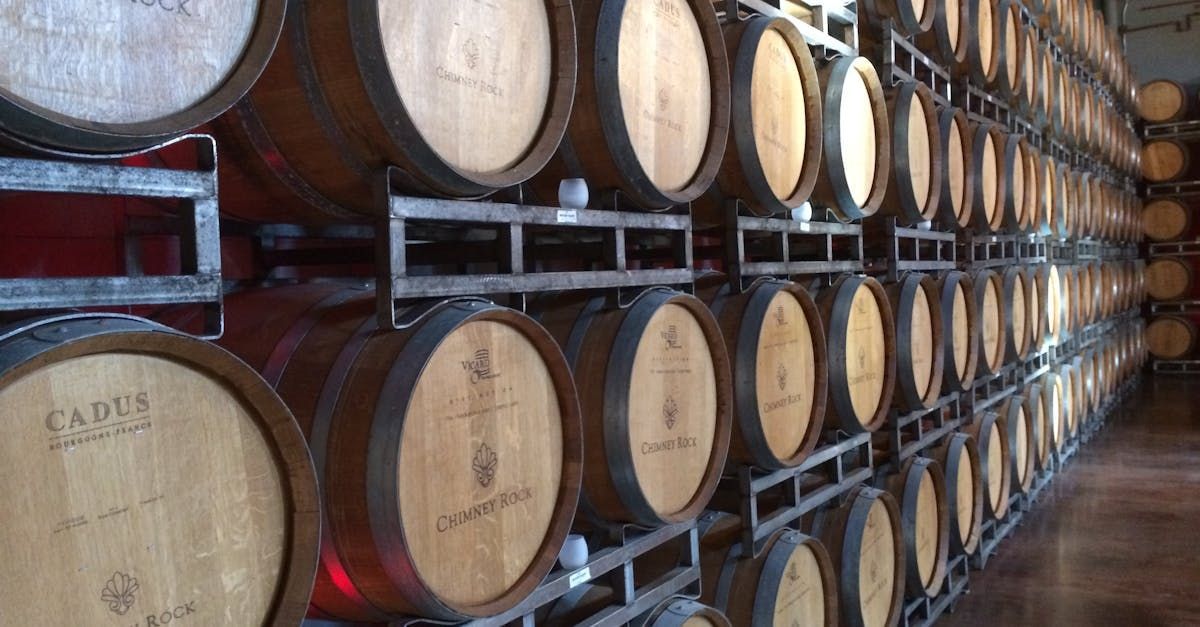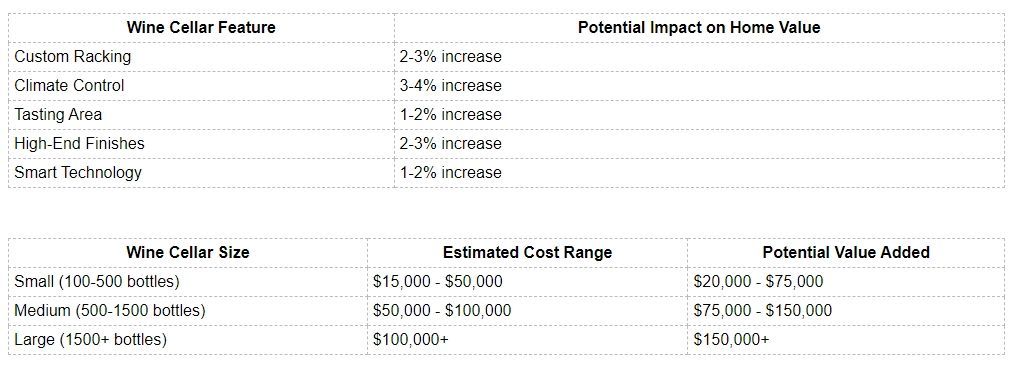Wine Cellar Design: Crafting Your Perfect Oasis
Key Takeaways
- Wine cellar design combines functionality and aesthetics to create an ideal storage environment
- Proper temperature and humidity control are essential for wine preservation
- Custom racking systems can maximize storage capacity and showcase prized bottles
- Lighting plays a crucial role in both ambiance and wine protection
- Materials like wood, stone, and glass can be used to create unique design elements
- Professional designers can help optimize space and incorporate personal style
Wine cellar design is an art that blends practicality with style, creating a space that not only preserves your wine collection but also serves as a stunning showcase. For wine enthusiasts in Charleston, South Carolina, a well-designed wine cellar can be the crown jewel of a home, reflecting both the region's rich history and the owner's taste.
Understanding the Basics of Wine Cellar Design
When it comes to wine cellar design, the first step is understanding the fundamental requirements for proper wine storage. Wine needs a consistent environment to age gracefully, and this is where design meets function.
Temperature Control: The Heart of Wine Preservation
The most critical aspect of wine cellar design is maintaining the right temperature. Ideal wine storage temperatures range from 55 to 59 degrees Fahrenheit (13 to 15 degrees Celsius). This consistency is vital to prevent wine from aging too quickly or developing off-flavors.
In Charleston's warm climate, insulation becomes particularly important. A well-insulated wine cellar helps maintain temperature stability and reduces the workload on cooling systems. This not only preserves wine quality but also keeps energy costs down.
Humidity: Striking the Right Balance
Humidity is another key factor in wine cellar design. The ideal humidity level for wine storage is between 50% and 70%. Too little humidity can dry out corks, leading to oxidation, while too much can promote mold growth.
For Charleston homeowners, managing humidity can be tricky due to the city's naturally humid climate. Dehumidifiers may be necessary to keep levels in check, especially during the muggy summer months.
Designing for Capacity and Accessibility
Once the environmental basics are addressed, the next step in wine cellar design is planning for capacity and accessibility. This is where personal preference and collection size come into play.
Racking Systems: Maximizing Space and Showcasing Wines
Wine racks are the backbone of any cellar design. They come in various styles, from traditional wooden racks to modern metal or acrylic systems. The choice depends on the cellar's overall aesthetic and the types of bottles in your collection.
For those with large collections, high-density racking can maximize storage space. These systems often include features like rolling racks or pull-out shelves to improve accessibility.
Display Areas: Highlighting Your Prized Bottles
Many wine enthusiasts like to showcase their most valuable or rare bottles. Incorporating display areas into your cellar design allows you to highlight these special wines. This might include individual bottle cradles, backlit shelving, or even a tasting area where featured wines can be prominently displayed.
Lighting: Setting the Mood and Protecting Your Wine
Lighting is a critical component of wine cellar design, serving both practical and aesthetic purposes. The right lighting can create a dramatic atmosphere while also ensuring that you can easily read labels and navigate the space.
Types of Lighting for Wine Cellars
LED lighting has become popular for wine cellars due to its low heat emission and energy efficiency. Recessed lighting can provide general illumination, while accent lighting can highlight specific areas or bottles.
It's important to remember that UV light can harm wine, so any lighting used should be UV-free. Motion sensors can be installed to ensure lights are only on when needed, further protecting your wine and reducing energy consumption.
Materials and Finishes: Creating Your Cellar's Character
The materials used in your wine cellar design can significantly impact its overall look and feel. From flooring to wall treatments, each element contributes to the cellar's character.
Flooring Options for Wine Cellars
Flooring choices for wine cellars should be both attractive and practical. Stone or tile flooring can provide a classic look while being easy to clean and maintain. For a warmer feel, some homeowners opt for sealed hardwood, though this requires careful consideration in Charleston's humid climate.
Wall Treatments: From Rustic to Modern
Wall treatments in wine cellars can range from exposed brick or stone for a rustic feel to smooth plaster for a more contemporary look. Some designers incorporate wine-themed murals or use reclaimed wood for a unique, eco-friendly touch.

Incorporating Charleston's Charm into Your Wine Cellar
For Charleston residents, incorporating elements of the city's rich history and coastal charm into wine cellar design can create a truly unique space.
Using Local Materials
Consider using local materials like Charleston brick or reclaimed wood from historic buildings to add authenticity to your cellar. These materials not only look beautiful but also tell a story.
Coastal-Inspired Design Elements
Subtle nods to Charleston's coastal location can be incorporated through color schemes, artwork, or decorative elements. Think cool blues and sandy neutrals, or perhaps a custom iron gate with a palmetto tree motif.
The Role of Technology in Modern Wine Cellar Design
Today's wine cellars often incorporate advanced technology to enhance both function and enjoyment.
Smart Climate Control Systems
Smart climate control systems allow you to monitor and adjust temperature and humidity from your smartphone. This is especially useful for Charleston homeowners who may need to make adjustments based on seasonal weather changes.
Inventory Management Systems
For serious collectors, inventory management systems can be integrated into the cellar design. These systems use barcode or RFID technology to track your collection, making it easy to locate specific bottles and manage your inventory.
Designing for Entertaining: The Social Aspect of Wine Cellars
Many wine enthusiasts view their cellar not just as storage, but as a space for entertaining. Incorporating a tasting area or seating nook can transform your cellar into a social hub.
Tasting Areas: From Simple to Elaborate
A tasting area can be as simple as a small table and chairs or as elaborate as a full bar setup. The key is to create a comfortable space where you can enjoy your wines with friends and family.
Integrating Audio-Visual Elements
For those who love to entertain, integrating audio-visual elements into your cellar design can enhance the experience. This might include a sound system for background music or a small TV for educational wine videos.
Professional Design vs. DIY: Making the Right Choice
While some homeowners may be tempted to tackle wine cellar design as a DIY project, working with a professional can often lead to better results, especially for larger or more complex cellars.
Benefits of Professional Wine Cellar Design
Professional designers bring expertise in both the technical aspects of wine storage and the aesthetic elements of cellar design. They can help you avoid common pitfalls, optimize your space, and create a cellar that truly reflects your style.
When DIY Might Be Appropriate
For smaller projects or those with simple needs, a DIY approach can be feasible. However, it's crucial to thoroughly research proper storage conditions and construction techniques to ensure your wine is adequately protected.
Wine Cellar Maintenance: Preserving Your Investment
A well-designed wine cellar is an investment, and proper maintenance is key to preserving both the cellar and your wine collection.
Regular Cleaning and Inspection
Regular cleaning and inspection of your wine cellar can prevent issues like mold growth or pest infestation. This includes dusting racks, checking for any signs of moisture, and ensuring all equipment is functioning properly.
Updating and Upgrading Your Cellar
As your collection grows or your tastes change, you may need to update or upgrade your cellar. A well-designed cellar should have some flexibility to accommodate these changes over time.
Sustainable Wine Cellar Design: Eco-Friendly Options
For environmentally-conscious wine lovers, there are several ways to incorporate sustainable practices into wine cellar design.
Energy-Efficient Cooling Systems
Choosing energy-efficient cooling systems can significantly reduce your cellar's environmental impact. Look for systems with high SEER ratings and consider options like geothermal cooling for larger cellars.
Sustainable Materials
Using sustainable materials like reclaimed wood or recycled glass can add character to your cellar while reducing its environmental footprint. These materials are often available locally in Charleston, supporting the community and reducing transportation emissions.
The Impact of Wine Cellar Design on Home Value
A well-designed wine cellar can be a significant selling point for a home, particularly in a market like Charleston where luxury features are highly valued.
Return on Investment
While the exact return on investment can vary, a quality wine cellar often adds more value to a home than its cost to install. This is especially true for higher-end homes where potential buyers expect luxury amenities.
Appeal to Potential Buyers
Even for non-wine enthusiasts, a beautifully designed wine cellar can be an attractive feature. It speaks to a home's overall quality and attention to detail, potentially setting it apart in a competitive market.

Incorporating Charleston's Charm into Your Wine Cellar
For Charleston residents, incorporating elements of the city's rich history and coastal charm into wine cellar design can create a truly unique space.
Using Local Materials
Consider using local materials like Charleston brick or reclaimed wood from historic buildings to add authenticity to your cellar. These materials not only look beautiful but also tell a story.
Coastal-Inspired Design Elements
Subtle nods to Charleston's coastal location can be incorporated through color schemes, artwork, or decorative elements. Think cool blues and sandy neutrals, or perhaps a custom iron gate with a palmetto tree motif.
The Role of Technology in Modern Wine Cellar Design
Today's wine cellars often incorporate advanced technology to enhance both function and enjoyment.
Smart Climate Control Systems
Smart climate control systems allow you to monitor and adjust temperature and humidity from your smartphone. This is especially useful for Charleston homeowners who may need to make adjustments based on seasonal weather changes.
Inventory Management Systems
For serious collectors, inventory management systems can be integrated into the cellar design. These systems use barcode or RFID technology to track your collection, making it easy to locate specific bottles and manage your inventory.
Designing for Entertaining: The Social Aspect of Wine Cellars
Many wine enthusiasts view their cellar not just as storage, but as a space for entertaining. Incorporating a tasting area or seating nook can transform your cellar into a social hub.
Tasting Areas: From Simple to Elaborate
A tasting area can be as simple as a small table and chairs or as elaborate as a full bar setup. The key is to create a comfortable space where you can enjoy your wines with friends and family.
Integrating Audio-Visual Elements
For those who love to entertain, integrating audio-visual elements into your cellar design can enhance the experience. This might include a sound system for background music or a small TV for educational wine videos.
Professional Design vs. DIY: Making the Right Choice
While some homeowners may be tempted to tackle wine cellar design as a DIY project, working with a professional can often lead to better results, especially for larger or more complex cellars.
Benefits of Professional Wine Cellar Design
Professional designers bring expertise in both the technical aspects of wine storage and the aesthetic elements of cellar design. They can help you avoid common pitfalls, optimize your space, and create a cellar that truly reflects your style.
When DIY Might Be Appropriate
For smaller projects or those with simple needs, a DIY approach can be feasible. However, it's crucial to thoroughly research proper storage conditions and construction techniques to ensure your wine is adequately protected.
Wine Cellar Maintenance: Preserving Your Investment
A well-designed wine cellar is an investment, and proper maintenance is key to preserving both the cellar and your wine collection.
Regular Cleaning and Inspection
Regular cleaning and inspection of your wine cellar can prevent issues like mold growth or pest infestation. This includes dusting racks, checking for any signs of moisture, and ensuring all equipment is functioning properly.
Updating and Upgrading Your Cellar
As your collection grows or your tastes change, you may need to update or upgrade your cellar. A well-designed cellar should have some flexibility to accommodate these changes over time.
Sustainable Wine Cellar Design: Eco-Friendly Options
For environmentally-conscious wine lovers, there are several ways to incorporate sustainable practices into wine cellar design.
Energy-Efficient Cooling Systems
Choosing energy-efficient cooling systems can significantly reduce your cellar's environmental impact. Look for systems with high SEER ratings and consider options like geothermal cooling for larger cellars.
Sustainable Materials
Using sustainable materials like reclaimed wood or recycled glass can add character to your cellar while reducing its environmental footprint. These materials are often available locally in Charleston, supporting the community and reducing transportation emissions.
The Impact of Wine Cellar Design on Home Value
A well-designed wine cellar can be a significant selling point for a home, particularly in a market like Charleston where luxury features are highly valued.
Return on Investment
While the exact return on investment can vary, a quality wine cellar often adds more value to a home than its cost to install. This is especially true for higher-end homes where potential buyers expect luxury amenities.
Appeal to Potential Buyers
Even for non-wine enthusiasts, a beautifully designed wine cellar can be an attractive feature. It speaks to a home's overall quality and attention to detail, potentially setting it apart in a competitive market.






